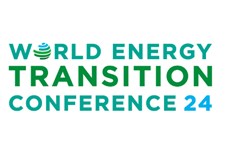ExxonMobil and Scepter to deploy technology for methane emissions detection
Published by Bella Weetch,
Editorial Assistant
Hydrocarbon Engineering,
ExxonMobil and Scepter, Inc. have agreed to work together to deploy advanced satellite technology and proprietary data processing platforms to detect methane emissions at a global scale.
“This collaboration will enable multiple industries to identify the sources of methane emissions around the world in real-time, so that leak repairs or mitigation solutions can be deployed rapidly,” said Bart Cahir, senior vice president of unconventional at ExxonMobil. “This is another example of how ExxonMobil is investing in technology with leading innovators to align with the Global Methane Pledge to reduce methane emissions by 30% by 2030, compared to 2020 levels.”
In the first phase of the project, the companies will design and optimise the plan for satellite placement and coverage, initially focused on capturing methane emissions data from ExxonMobil operations in the Permian Basin. Scepter will deploy satellites in 2023 and increase coverage to more than 24 satellites over three years, forming a large constellation network capable of monitoring operations around the world.
Scepter’s satellite detection technology has shown the ability to accurately collect data on methane, while also identifying sources of CO2, nitrogen oxides, sulfur oxides, and other greenhouse gases.
The companies are also pioneering a proprietary data fusion system that reconciles information collected from multiple detection methods, including ground-based, stationary and mobile monitoring devices. By consolidating the data, scientists could unlock valuable insights and opportunities to further quantify and validate programs that reduce methane emissions.
When combined with ExxonMobil’s data from ground-based sensors and aerial surveys using advanced analytics, Scepter’s data platform allows the company to further establish information regarding its methane emissions performance on an unprecedented scale and quickly identify high-emitting sources. The data processing platform will enable the expansion of third-party certification and supplement methane emissions-reductions efforts.
ExxonMobil is also taking part in an industry study with the Collaboratory to Advance Methane Science to expand ongoing initiatives to identify smarter and faster ways to detect and mitigate emissions using satellites.
The company recently announced plans to achieve net zero greenhouse gas emissions from its operated assets in the US Permian Basin by 2030. These efforts include several key focus areas including continued investments in methane monitoring and detection technologies and eliminating routine flaring in the company’s Permian Basin operations by year-end 2022, in support of the World Bank’s Zero Routine Flaring initiative.
Read the article online at: https://www.hydrocarbonengineering.com/refining/14122021/exxonmobil-and-scepter-to-deploy-technology-for-methane-emissions-detection/
You might also like
Viridi Energy signs 20-year agreement with Énergir
Viridi Energy, a renewable natural gas (RNG) platform, has signed a 20-year offtake agreement with Énergir, L.P.


